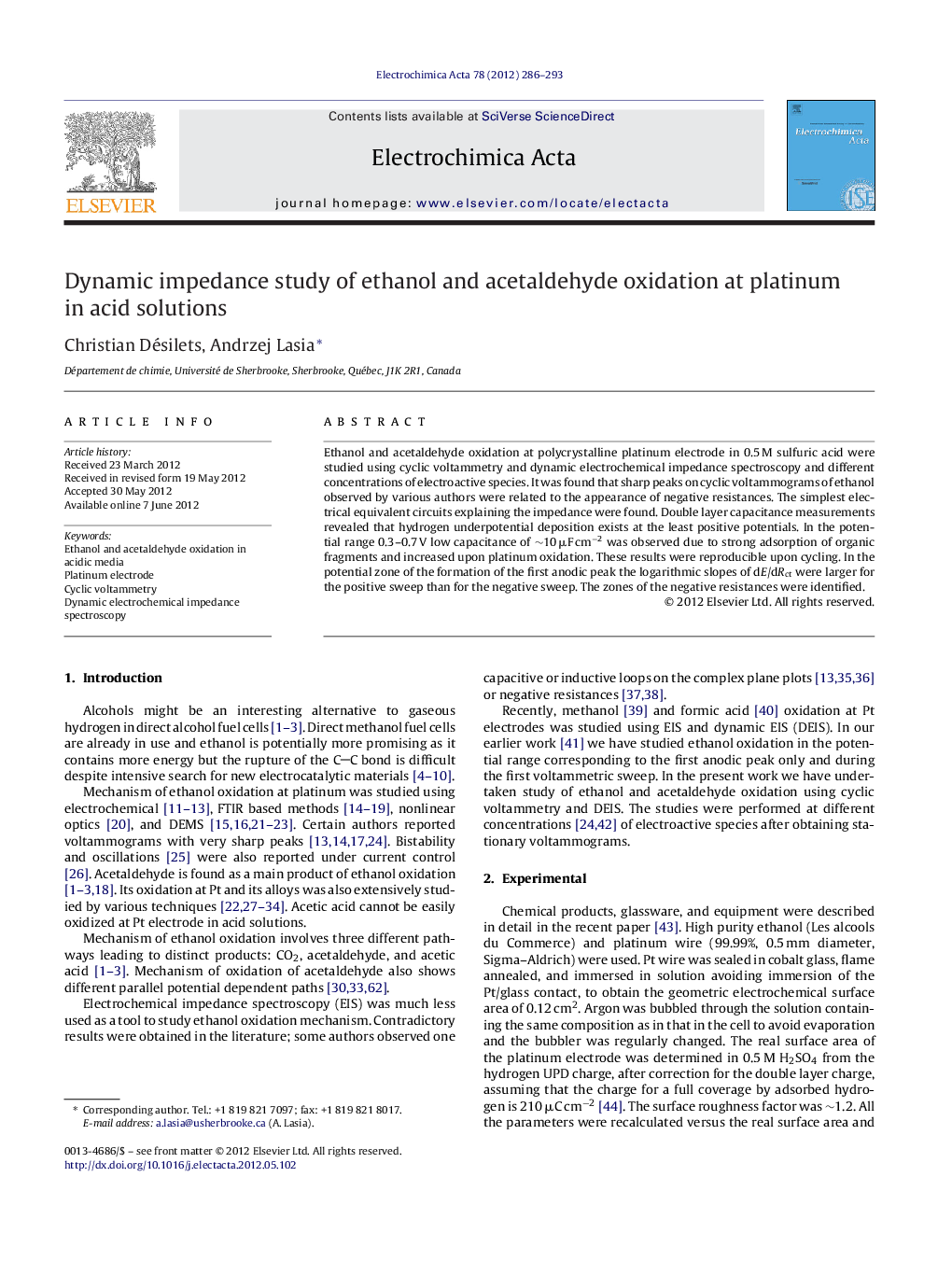| Article ID | Journal | Published Year | Pages | File Type |
|---|---|---|---|---|
| 188317 | Electrochimica Acta | 2012 | 8 Pages |
Ethanol and acetaldehyde oxidation at polycrystalline platinum electrode in 0.5 M sulfuric acid were studied using cyclic voltammetry and dynamic electrochemical impedance spectroscopy and different concentrations of electroactive species. It was found that sharp peaks on cyclic voltammograms of ethanol observed by various authors were related to the appearance of negative resistances. The simplest electrical equivalent circuits explaining the impedance were found. Double layer capacitance measurements revealed that hydrogen underpotential deposition exists at the least positive potentials. In the potential range 0.3–0.7 V low capacitance of ∼10 μF cm−2 was observed due to strong adsorption of organic fragments and increased upon platinum oxidation. These results were reproducible upon cycling. In the potential zone of the formation of the first anodic peak the logarithmic slopes of dE/dRct were larger for the positive sweep than for the negative sweep. The zones of the negative resistances were identified.
► Sharp peaks on cyclic voltammograms of ethanol are related to the negative resistances appearing around the voltammetric peaks. ► Strong chemisorption of organic fragments exists between 0.3 and 0.7 V. ► Partial hydrogen underpotential adsorption exists at less positive potentials in the presence of ethanol and acetaldehyde. ► Potentiostatic stationary impedances cannot be obtained in practice as the state of the electrode changes continuously.
